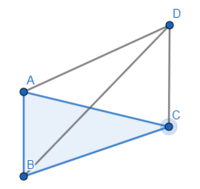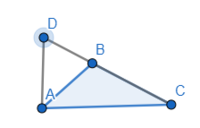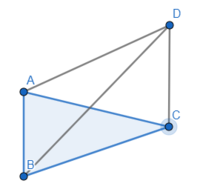Could You help me with the solutions to these 2 problems?
1. The base of the pyramid ABCM is the isosceles triangle ABC (AB= 40 and AC= BC=25). The surrounding edge CD=8 is perpendicular to the base. What is the area of the pyramid?
2. The base of the pyramid ABCM is the triangle ABC (AB= 13, BC= 14, AC= 15). The surrounding edge AD=16 against the medium-sized side of the base is perpendicular to the base. What is the full area (S1) of the pyramid?
The first graph is to the first problem and the second graph is to the second problem
1. The base of the pyramid ABCM is the isosceles triangle ABC (AB= 40 and AC= BC=25). The surrounding edge CD=8 is perpendicular to the base. What is the area of the pyramid?
2. The base of the pyramid ABCM is the triangle ABC (AB= 13, BC= 14, AC= 15). The surrounding edge AD=16 against the medium-sized side of the base is perpendicular to the base. What is the full area (S1) of the pyramid?
The first graph is to the first problem and the second graph is to the second problem



